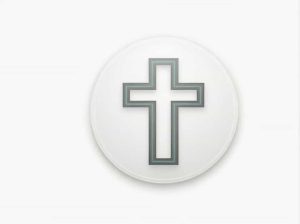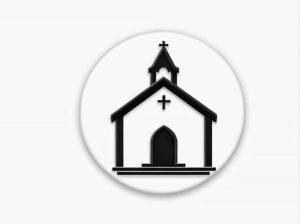The canonization of the Bible refers to the process by which the Christian Church officially recognized which books should be included in the Holy Scriptures. This was not a single event but a gradual process that took place over several centuries.
The Bible is divided into the Old Testament and the New Testament and each had its own journey toward canonization. Understanding when and how the Church recognized the books of the Bible helps us appreciate the historical and spiritual significance of the Scriptures.
What Does It Mean to Canonize the Bible?
To canonize means to officially recognize a collection of books as authoritative and inspired by God. The word “canon” comes from the Greek word “kanon” meaning rule or standard.
For a book to be included in the Bible it had to meet certain criteria such as:
- Being written by a prophet apostle or someone closely associated with them.
- Being widely accepted by early Christian communities.
- Aligning with the teachings and doctrine of the Church.
The canonization of Scripture was necessary to preserve the true teachings of Christianity and prevent false doctrines from spreading.
Canonization of the Old Testament
The Old Testament was largely recognized before the time of Jesus. However there was no official Jewish canon until later.
1. The Hebrew Scriptures
- The Torah (Genesis Exodus Leviticus Numbers and Deuteronomy) was widely accepted as authoritative by 400 BC.
- The Prophets (Nevi’im) and the Writings (Ketuvim) were used in Jewish worship but were not universally agreed upon.
2. The Council of Jamnia (90 AD)
Many scholars believe that Jewish rabbis met at Jamnia to confirm which books were considered canonical. The 39 books of the Old Testament used in most Protestant Bibles were largely settled by this time.
However the Catholic and Orthodox Churches also recognize the Deuterocanonical books which were included in the Septuagint (Greek translation of the Old Testament used by early Christians).
Canonization of the New Testament
The process of selecting the 27 books of the New Testament took several centuries.
1. Early Christian Writings (1st-2nd Century AD)
After Jesus’ resurrection His followers wrote Gospels letters and historical accounts to guide the Church. Many of these writings circulated among Christian communities.
Books that were widely used included:
- The Four Gospels (Matthew Mark Luke and John).
- The letters of Paul to various churches.
- The Acts of the Apostles and Revelation.
However other writings such as the Gospel of Thomas and Shepherd of Hermas were debated.
2. The Muratorian Fragment (Around 170 AD)
This ancient document lists most of the books that would later be part of the New Testament. It shows that early Christians were already recognizing a core set of Scriptures.
3. Church Fathers and the Canon (2nd-4th Century AD)
Church leaders like Irenaeus Origen and Athanasius wrote about which books were authoritative. They emphasized books that were connected to the apostles and widely accepted in the Church.
4. The Councils of Hippo (393 AD) and Carthage (397 AD)
These councils led by early Church leaders officially confirmed the 27 books of the New Testament. This decision was not creating Scripture but recognizing the books that had already been used by Christians for centuries.
5. The Role of the Latin Vulgate (4th Century AD)
In 382 AD Pope Damasus I commissioned Saint Jerome to translate the Bible into Latin. His translation called the Vulgate helped standardize the accepted books of the Bible.
Why Was the Canonization Process Necessary?
Several factors led to the need for an official biblical canon:
- Preserving the True Teachings of Christianity – Many writings falsely claimed to be from apostles and the Church needed to distinguish truth from falsehood.
- Persecution of Christians – Under Roman emperors Christians needed to know which books were worth dying for.
- Heresies and False Teachings – Groups like the Gnostics introduced writings that contradicted Christian doctrine. The Church needed a clear standard of Scripture.
- Unity Among Believers – An agreed-upon canon helped Christians across different regions stay united in faith.
Differences in Biblical Canons Today
While most Christians accept the same 27 books of the New Testament differences exist in the Old Testament canon:
- Protestant Bible – Contains 39 Old Testament books.
- Catholic Bible – Includes 7 additional Deuterocanonical books (Tobit Judith Wisdom Sirach Baruch and 1 & 2 Maccabees).
- Eastern Orthodox Bible – Recognizes some additional texts beyond the Catholic canon.
These differences arose due to variations in early Jewish and Christian traditions.
The Bible’s Canonization and Its Importance Today
The process of canonization was essential for ensuring that Christians have a trustworthy and divinely inspired Scripture. Today the Bible continues to be the foundation of Christian faith doctrine and daily living.
Despite historical debates the core message of Scripture remains unchanged: God’s love salvation through Jesus Christ and guidance for believers.
The canonization of the Bible was a centuries-long process guided by the Holy Spirit Church leaders and early Christian communities. The Old Testament was largely recognized by the 1st century AD while the New Testament canon was confirmed by the 4th century AD.
Through this process Christians today have a reliable and inspired collection of Scriptures that continue to guide faith and life. Understanding the history of the Bible’s canonization deepens our appreciation for God’s Word and its lasting impact.



